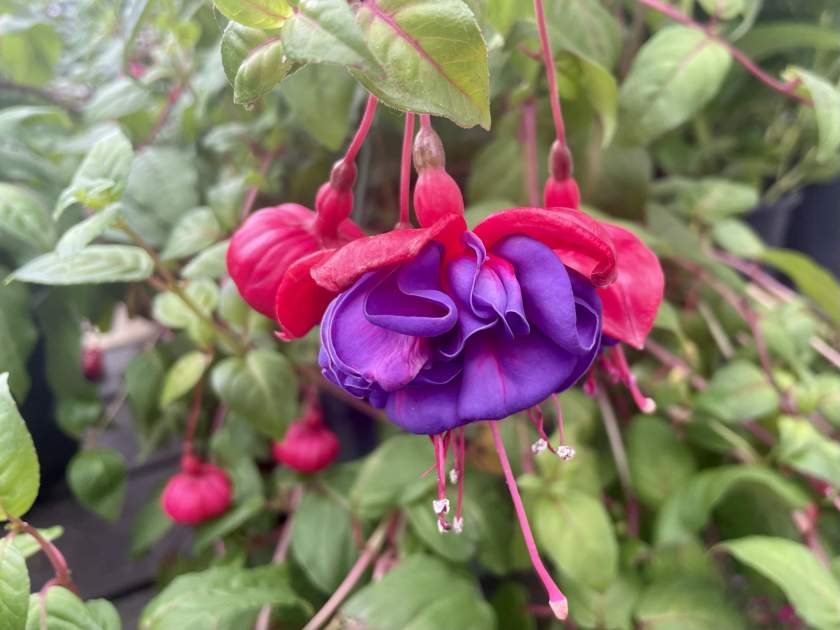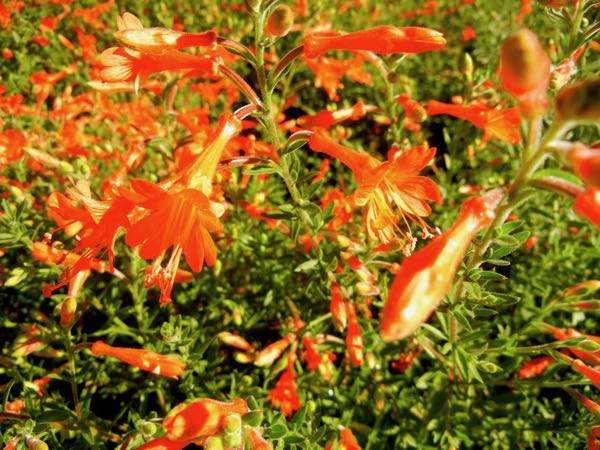The Onagraceae family is a diverse and fascinating group of flowering plants that encompasses a wide range of species and genera. Commonly known as the Evening Primrose Family, this botanical family includes several notable plants that are valued for their beauty, ecological importance, and medicinal properties. Here’s an informative description of the Onagraceae family:
The Onagraceae family is a botanical family comprising flowering plants known for their captivating blossoms and distinctive features. These plants are primarily herbaceous perennials, but some species can be annuals, biennials, or even shrubs. The family includes over 650 species distributed across various regions of the world.
One of the most striking characteristics of the Onagraceae family is the alluring beauty of its flowers. The flowers are typically showy and have vibrant colors, making them highly attractive to pollinators such as bees, butterflies, and moths. The floral structure often consists of four or eight petals, arranged in a symmetrical pattern, and four sepals.
The leaves of Onagraceae plants exhibit considerable variation in shape, size, and arrangement. They can be simple or lobed, alternate or opposite, and may possess serrated or smooth margins. The foliage often adds visual interest to the plants, contributing to their overall appeal.
Onagraceae plants are found in diverse habitats around the world, with a significant presence in North and South America. They also occur in Europe, Asia, and parts of Africa. Different species within the family exhibit varying preferences for environmental conditions, ranging from wetlands and meadows to dry slopes and woodlands.
Ecological Importance:
The Onagraceae family plays a crucial role in ecosystems as a food source for many pollinators. The bright and nectar-rich flowers attract insects, which aid in the pollination process and contribute to the reproductive success of the plants. Some species within the family also serve as host plants for specific butterfly species.
Medicinal and Culinary Uses:
Several members of the Onagraceae family have medicinal properties and are used in traditional herbal medicine. Evening primrose oil, derived from the seeds of certain species, is known for its high content of gamma-linolenic acid (GLA) and is used in the treatment of various health conditions. Additionally, some Onagraceae plants have edible parts, and their leaves, flowers, or roots are incorporated into culinary practices in certain cultures.
Notable Genera:
The Onagraceae family encompasses several notable genera, including but not limited to:
Oenothera: Commonly known as evening primroses, this genus is renowned for its vibrant yellow flowers that often open in the evening, giving rise to the family’s common name.
Fuchsia: Fuchsias are admired for their pendulous, bell-shaped flowers that come in a wide array of colors. They are popular ornamental plants and are cherished for their elegance and charm.
Epilobium: Epilobium species, commonly referred to as willowherbs or fireweeds, are known for their delicate flowers and their ability to colonize disturbed areas, such as burned landscapes.
Cultivation of Onagraceae:
Many plants within the Onagraceae family are cultivated as ornamentals in gardens and landscapes due to their attractive flowers and foliage. The cultivation requirements vary depending on the specific genus and species. However, most Onagraceae plants thrive in well-drained soil, moderate sunlight to partial shade, and appropriate moisture levels.
Overall, the Onagraceae family is a captivating group of flowering plants that exhibit remarkable beauty, ecological significance, and potential medicinal uses. From the enchanting evening primroses (Oenothera) to the elegant fuchsias and resilient willowherbs (Epilobium), each genus within this family offers unique characteristics and contributions to the botanical world.
The Onagraceae family’s diverse range of species has captured the attention of botanists, horticulturists, and nature enthusiasts alike. Their stunning flowers, with their intricate petal arrangements and striking colors, are a visual delight. Whether it’s the delicate yellow blooms of evening primroses, the vibrant hues of fuchsias, or the subtle beauty of willowherbs, these flowers add a touch of elegance to any landscape or garden.
Ecologically, the Onagraceae family plays a significant role as a food source for pollinators, including bees, butterflies, and moths. The nectar-rich flowers attract these important insect species, facilitating pollination and promoting biodiversity. As pollinators visit the flowers, they contribute to the reproduction and genetic diversity of Onagraceae plants, ensuring their survival and propagation.
Certain members of the Onagraceae family have also found their way into traditional medicine and culinary practices. Evening primrose oil, extracted from the seeds of some species, is valued for its potential health benefits, particularly for its high content of gamma-linolenic acid (GLA). In traditional herbal medicine, different parts of Onagraceae plants are used to address various ailments and conditions.
Cultivating Onagraceae plants can bring joy to gardeners and enthusiasts. While specific cultivation requirements may vary among genera and species, most Onagraceae plants prefer well-drained soil, moderate sunlight to partial shade, and appropriate moisture levels. Understanding the specific needs of each plant ensures their optimal growth and enhances their ornamental value in gardens, landscapes, or even container plantings.
In conclusion, the Onagraceae family represents a captivating blend of botanical beauty, ecological significance, and potential therapeutic uses. Its diverse genera, such as evening primroses, fuchsias, and willowherbs, continue to fascinate and inspire us with their captivating flowers and contributions to the natural world. Whether admired for their ornamental value, ecological role, or medicinal properties, Onagraceae plants undoubtedly enrich our lives and our connection to the wonders of nature.
The list of genera in Onagraceae includes:
Boisduvalia
Brebissonia
Calylophus
Camissonia
Camissoniopsis
Chamerion
Chylismia
Chylismiella
Circaea
Clarkia
Epilobium
Eremothera
Eulobus
Gayophytum
Gongylocarpus
Hartmannia
Hauya
Isnardia
Jehlia
Kneiffia
Lavauxia
Lopezia
Ludwigia
Ludwigiantha
Megacorax
Megapterium
Neoholmgrenia
Onagra
Pachylophis
Pachylophus
Pelozia
Peniophyllum
Pseudolopezia
Raimannia
Sphaerostigma
Stenosiphon
Taraxia
Tetrapteron
Xylonagra



